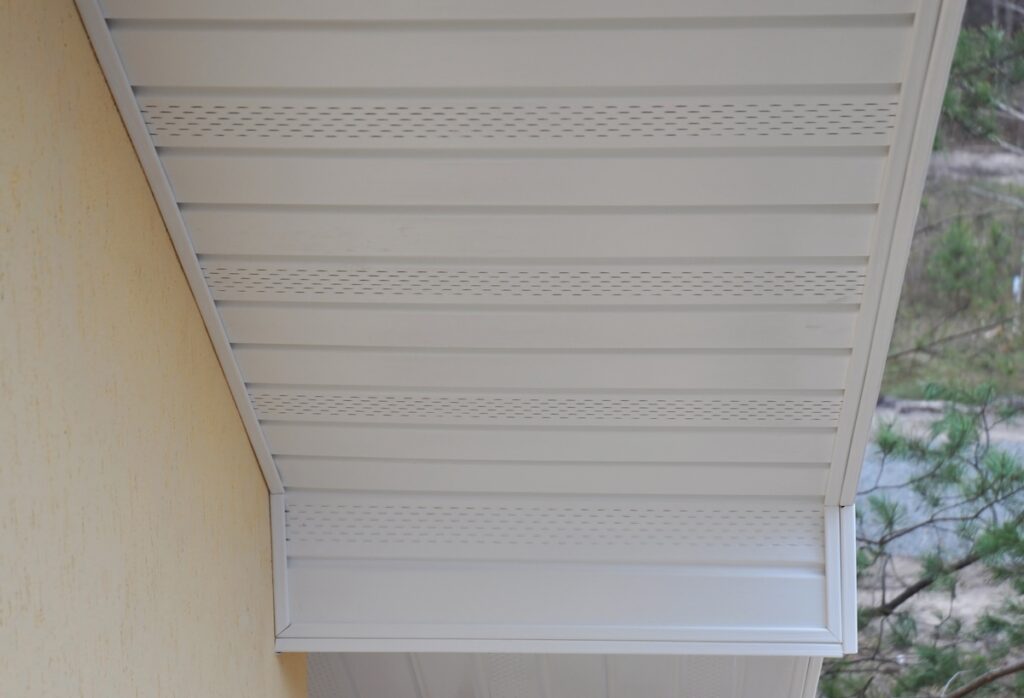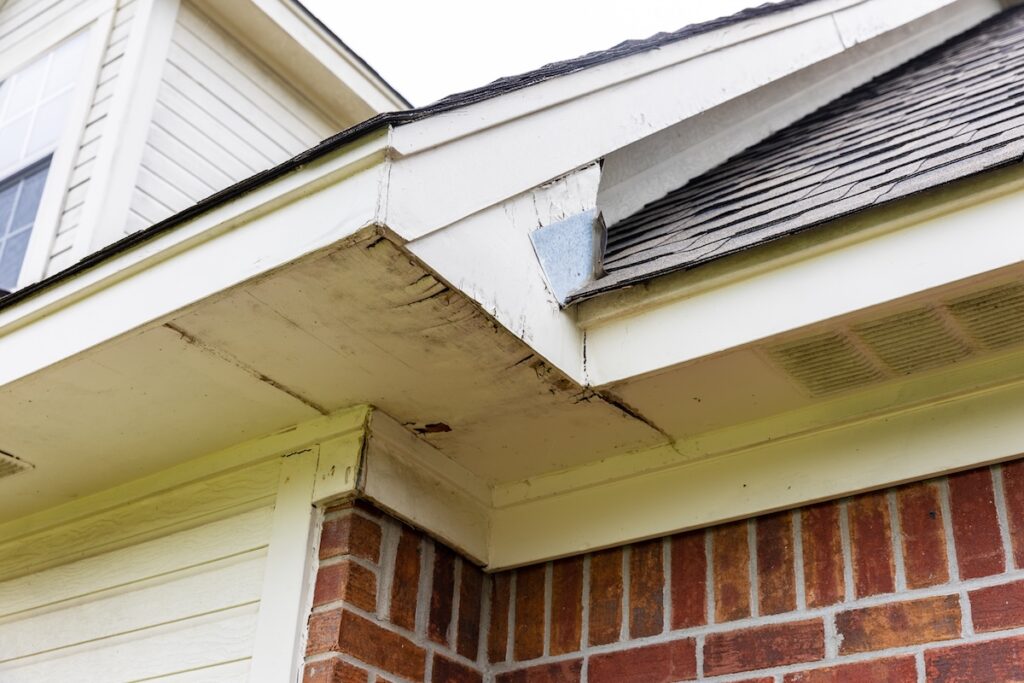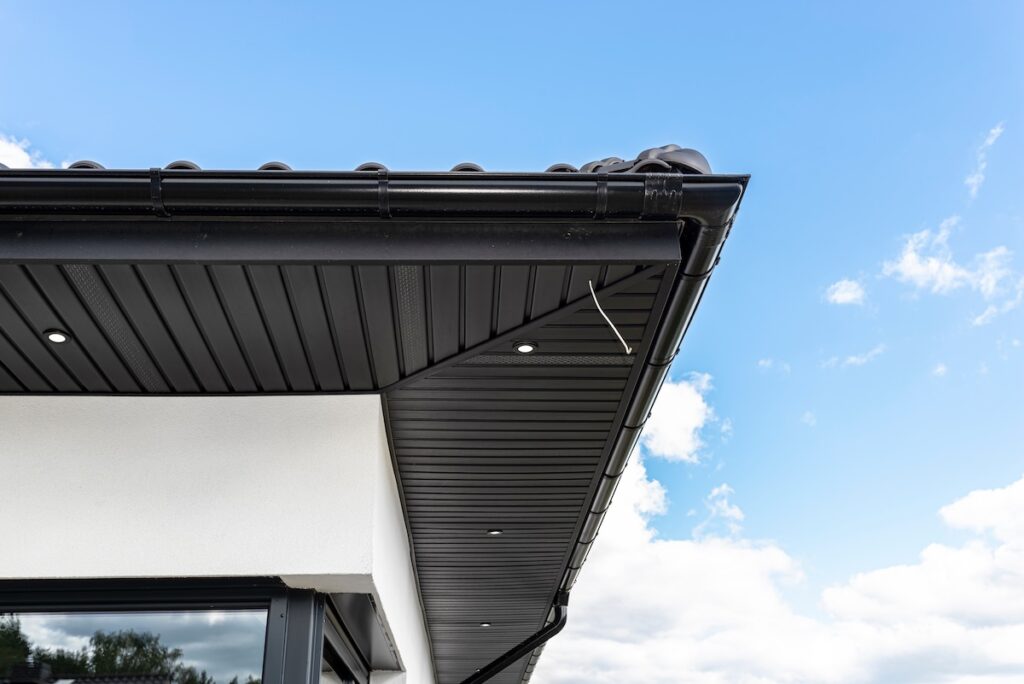
Soffit and Fascia: Why They Matter For Your Roof
6/11/25
6 Min Read
Soffit and fascia are two often-overlooked components of a roofing system, but they play a vital role in protecting your home. While shingles and flashing get most of the attention, soffit and fascia quietly safeguard your attic, promote proper ventilation, and contribute to the strength of your roof structure. For homeowners in Ohio, understanding how these features function can help extend your roof’s life and improve your home’s curb appeal.
In this post, we’ll explore:
- What soffit and fascia are: And how they fit into your roofing system
- Why they’re essential: For airflow, weather protection, and aesthetics
- What can go wrong: Common issues and how to address them
What Are Soffit and Fascia?
Though subtle in appearance, soffit and fascia work behind the scenes to protect your roof overhangs and attic.

Soffit Overview
The soffit is the horizontal surface beneath your roof overhangs, often vented to allow fresh air into the attic.
- Supports airflow: Proper ventilation through the soffit boards helps regulate temperature and moisture in the attic.
- Prevents rot: Air movement keeps humidity from building up and damaging the roof structure.
- Blocks pests: A sealed, intact soffit deters rodents, birds, and insects.
Fascia Defined
The fascia is the vertical finishing edge that runs along the lower edge of your roof, just behind the gutters.
- Holds the gutters: A strong fascia provides critical support for your gutter system.
- Protects the edge: It keeps moisture out of your roof’s wooden framing.
- Elevates style: A clean, uniform fascia installation improves your home’s curb appeal.
Ultimately, while the soffit and fascia are vital for ventilation and drainage, they are just two pieces of a complex structure. Every part, from the visible shingles to the hidden truss system, plays a unique role in your home’s protection. To gain a complete understanding of how these essential components work together, review our full breakdown of the parts of a roof.
Why Soffit and Fascia Matter
While they may seem secondary to your shingles or flashing, soffit and fascia are foundational to a high-performing roof system.
Ensures Proper Ventilation
- Attic health: Vented soffit boards pull fresh air in, pushing out warm, moist air through roof vents.
- Energy efficiency: Proper ventilation reduces the strain on your HVAC system.
- Prevents ice dams: Airflow helps regulate roof temperature in winter.
Protects the Roof Structure
- Moisture barrier: Fascia boards protect exposed wood from rain and snow.
- Rot resistance: Keeping water out prevents decay in rafters and decking.
- Structural support: A solid fascia installation strengthens the perimeter of your roofing system.
Boosts Home’s Appearance
- Crisp lines: Fresh vinyl soffit and updated fascia boards add clean, modern lines to your home’s silhouette.
- Color options: Matching your soffit and fascia to siding or trim increases your home’s curb appeal.
- First impressions: These finishing touches can improve property value and make your home stand out.
7 Signs Your Soffit and Fascia Need Attention
Not sure if yours are in good shape? Look for these warning signs:

- Peeling paint or soft wood: This may indicate water is soaking into wood soffits or fascia boards.
- Animal infestations: Squirrels or birds nesting near the eaves may mean your soffit boards are damaged.
- Sagging gutters: Failing fascia installation can weaken gutter supports.
- Visible wood rot: Warped, cracked, or spongy boards are signs it’s time for fascia repair.
- Condensation in attic: Poor proper ventilation through soffits may be to blame.
- High energy bills: Stagnant attic air can overheat your home and tax your A/C system.
- Ice dams on roof: Inadequate airflow causes uneven roof temperatures in winter.
Material Options: Pros and Cons
Choosing the right material helps balance style, durability, and maintenance.
Vinyl Soffit
- Low maintenance: Vinyl soffit won’t peel, rot, or attract insects.
- Budget-friendly: It’s one of the most affordable options available.
- Style choices: Comes in multiple colors and vent patterns.
Aluminum Soffits
- Resists rust: Aluminum soffits perform well in wet or snowy climates.
- Great for ventilation: Available with continuous vents or perforations.
- Pairs with metal roofs: Looks clean and modern.
Wood Soffits and Fascia
- Traditional charm: Natural wood soffits add character and warmth.
- Customizable: Can be painted or stained for a personalized look.
- Maintenance required: Needs sealing or painting to prevent water damage and pests.
When to Repair or Replace
Knowing whether you need fascia repair or a full replacement depends on the damage and age of your system.
Repair May Be Enough If:
- Localized damage: A small section of rot or cracking can often be repaired without replacing everything.
- Functional ventilation: If soffit boards are intact and airflow is sufficient, repairs can restore full function.
- Newer installation: Recently installed systems may just need touch-ups or adjustments.
Consider Full Replacement If:
- Extensive wood rot: Especially common with old wood soffits and fascia in wet climates.
- Ventilation problems persist: Upgrading to vinyl soffit or aluminum soffits may improve air circulation.
- Aesthetic update: Faded, mismatched, or outdated boards may hurt your home’s curb appeal.

7 Common Repairs for Soffit and Fascia
- Replacing rotted wood: Damaged wood soffits and fascia are cut out and swapped with treated lumber or modern alternatives.
- Reattaching gutters: Loose gutters are often a symptom of failed fascia installation and require reinforcement.
- Sealing animal entry points: Gaps in soffit boards are sealed to block pests.
- Patching vent holes: Cracks or damage in vented panels are repaired or replaced for proper ventilation.
- Painting or finishing: Regular maintenance helps protect older wood materials.
- Upgrading material: Many homeowners replace failing wood with vinyl soffit or aluminum soffits for durability.
- Checking attic airflow: Inspections ensure the entire ventilation system, including roof vents, is balanced and effective.
Installation and Maintenance Best Practices
Getting the most out of your soffit and fascia starts with correct setup and care. To guarantee this, we highly recommend professional installation and a maintenance plan for the future.
Installation Tips
- Choose the right material: Climate and budget help determine if wood soffits, vinyl soffit, or aluminum soffits are right for you.
- Ensure airflow: Even spacing and venting allow for proper ventilation throughout the attic.
- Coordinate colors: Matching trim boosts overall home’s curb appeal.
Ongoing Maintenance
- Inspect twice yearly: Check for damage, rot, or blockages in spring and fall.
- Clean gutters: Prevent overflow that can saturate the fascia or leak behind soffit boards.
- Look for pest activity: Birds or squirrels around the eaves may signal a gap in your soffit.
Protect Every Part of Your Roof With Buckeye State Roofing
Soffit and fascia do more than frame your roof—they ventilate your attic, protect your rafters, and enhance your home’s appearance. Whether you’re looking to upgrade to vinyl soffit, fix worn wood soffits, or handle an urgent fascia repair, keeping these components in top shape is essential for a healthy roof structure.
At Buckeye State Roofing, we take pride in giving attention to every detail. Our expert team of roofers provides reliable fascia installation, high-quality material options, and thorough inspections to ensure lasting performance.
Contact us today for a free inspection and let’s make sure your soffit and fascia are working as hard as the rest of your roof.
